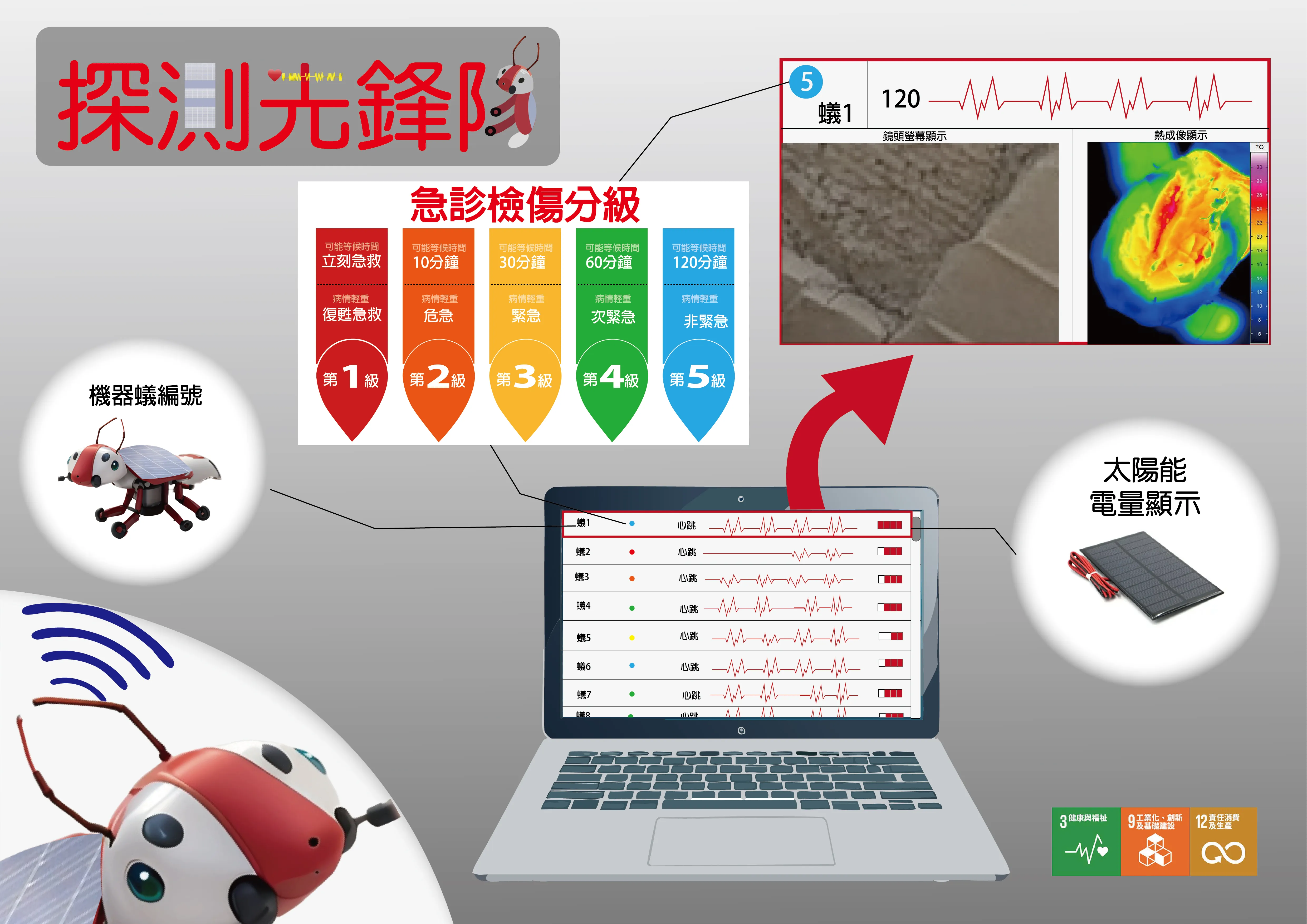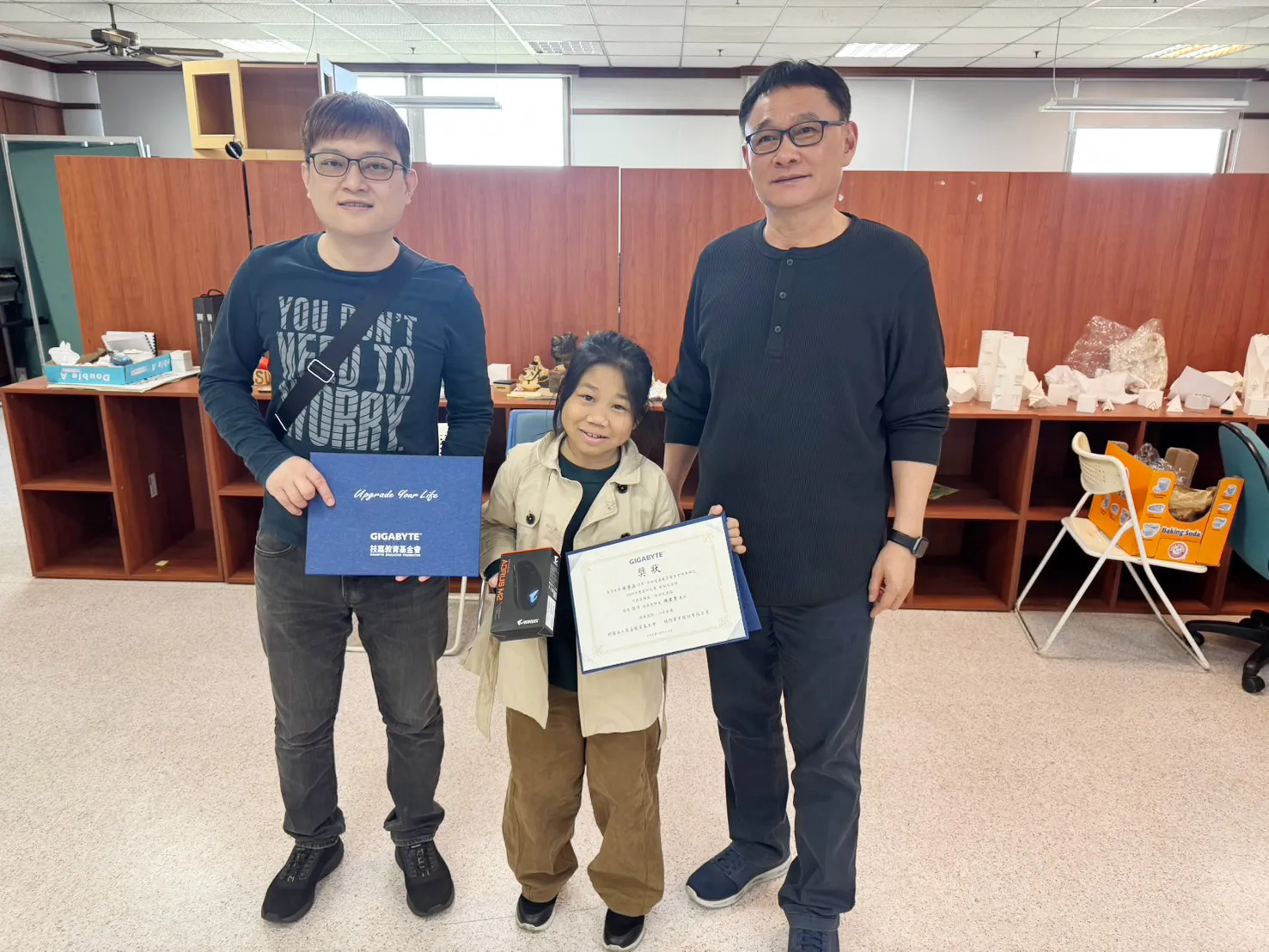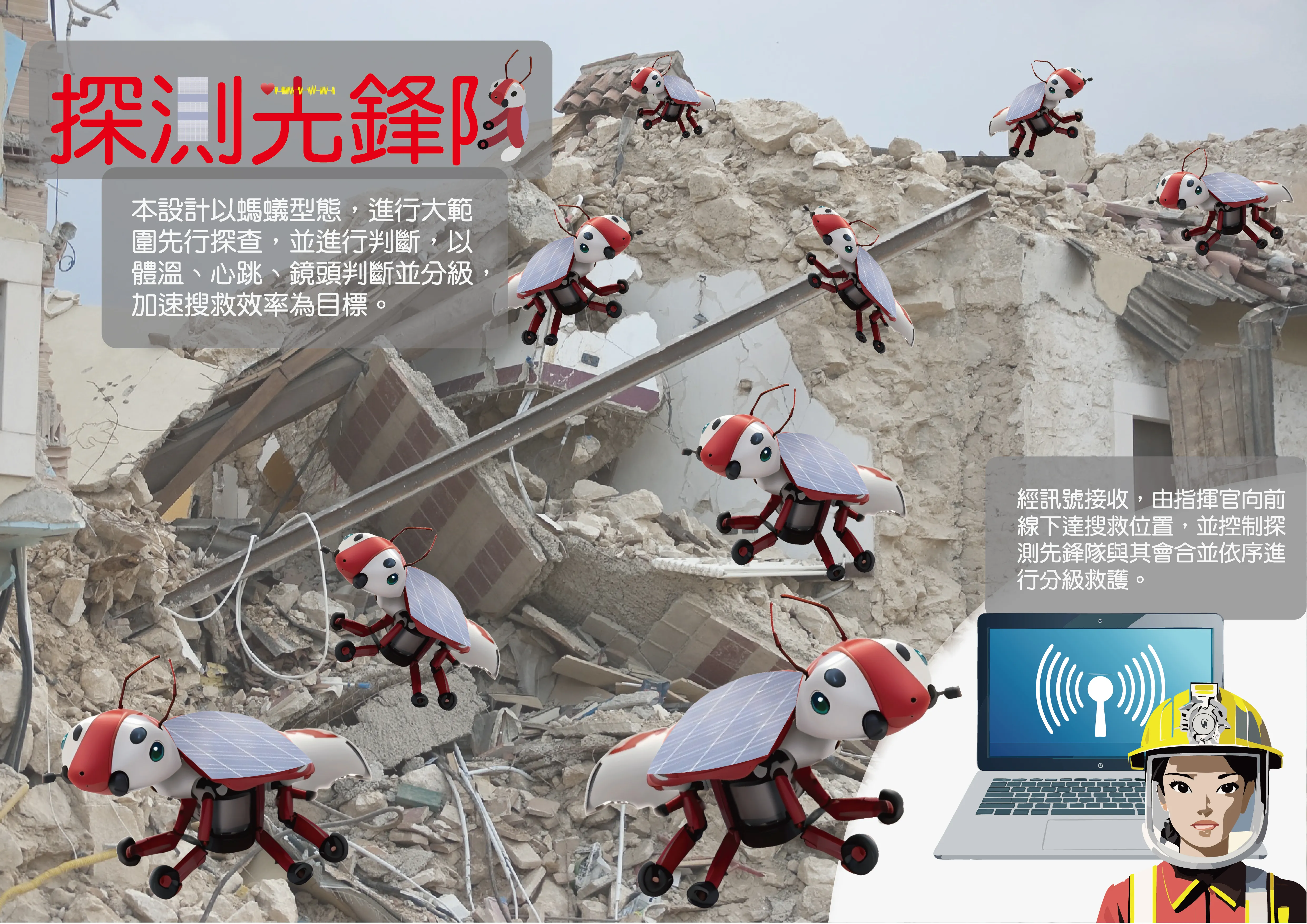ISU’s “AidAnt Guardians” Wins Innovation Award in Design Competition, Pioneering Disaster Search Like Sci-Fi’s Ant-Man
The futuristic scenes of Ant-Man executing missions in sci-fi films may soon become a reality! The prestigious “2025 Great Design,” now in its 23rd year, saw outstanding performances from ISU. Pei-Han Su, a student from the Department of Creative Integrated Design under the College of Communication and Design, won an Honorable Mention in the Innovation and Technology category with the project AidAnt Guardians. This marks the fourth consecutive year that ISU has been recognized in the competition, highlighting its strong foundation and creative excellence in design.
The Great Design is jointly organized by the GIGABYTE Education Foundation and Wonderland Group, with guidance from the Department of Lifelong Education of the Ministry of Education and the Taiwan Design Alliance. This year’s competition focuses on two main categories: Innovation and Technology and Enhancing Life. The Innovation and Technology category explicitly explores the theme of “Intelligent Disaster Prevention,” challenging participants to develop concept-based products that leverage AI as a core technology to mitigate disaster damage while promoting sustainability. Inspired by witnessing the aftermath of the Hualien earthquake and the Taiwanese drama Tears on Fire, which portrays the lives of firefighters, Pei-Han Su from the Department of Creative Integrated Design integrated earthquake response and firefighting concepts into her project. Drawing from ants’ agile movement and terrain adaptability, she developed AidAnt Guardians using generative AI technology. These robotic ants can be deployed ahead of rescue teams to conduct large-scale searches and provide assistance in disaster-stricken areas.
The AidAnt Guardians are equipped with solar panels on their backs to extend battery life, reducing dependence on external power sources in disaster zones. Their eyes function as pinhole cameras, their mandibles are fitted with infrared thermal sensors, and their abdomen contains a heartbeat detection system. Additionally, their antennae enable wireless data transmission, sending real-time information to the command center to accelerate AI-driven triage assessments. This system optimizes the allocation of rescue resources and enhances search-and-rescue efficiency. Su emphasized that both disaster prevention and post-disaster rescue efforts are equally critical. The core focus of her design is to enable large-scale, high-efficiency search operations while minimizing human labor and energy expenditure. She also credited ISU’s X+AI interdisciplinary integration curriculum for equipping her with the skills to incorporate AI into design. She transformed hand-drawn concept sketches into high-quality renderings through generative AI technology, significantly improving her project’s visual clarity and persuasiveness.
Su expressed her gratitude to her mentors, Dr. Chien-Nan Chen and Dr. Jyh-Rong Chou, for their invaluable guidance and to ISU for providing access to cutting-edge AI software and hardware. She emphasized that AI accelerated the design process and enabled her to present her ideas more clearly and precisely. Dr. Chen, who has long been dedicated to technological creativity, actively incorporates emerging trends and innovations into his teaching each year, guiding students in interdisciplinary projects. He believes collaborating with students sparks more inspiration than working alone, sustaining his passion for creation while strengthening the mentor-student bond. More importantly, he sees hands-on learning as essential in shaping students’ design perspectives, instilling in them a strong sense of responsibility and commitment to social impact—values he considers the true essence of education.


